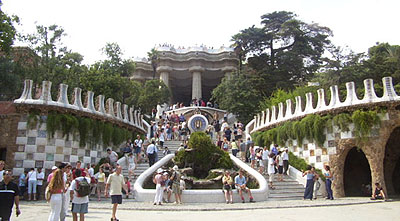SU?
-

-
@solo said:
@unknownuser said:
Any one seen the resemblance?
The one is a silly cartoon creation meant to make folk laugh, and the other is my Mr. Krabby.


-
@kwistenbiebel said:
Oops...I should be more careful when ventilating my personal opinion.
Sorry if it came out a bit harsh. I'll formulate a bit more nuanced next time not to sound that cruel...And yeah, I should get my figures correct.
Maybe I shouldn't decide upon just a rendering.
...and wait for the design being physically built?Frankly, I think you're right. This is a surprisingly ugly design. Mental exercise: picture this house, if you like, next to a Neutra. May put things into perspective.
I'm gonna build my own house in 4 - 5 years from now, and I swear, if my architect presents something like this to me, I'll fire him on the spot and set the dogs upon him. Not that I've got any dogs, but it's the thought that counts.

-
@unknownuser said:
I'm gonna build my own house in 4 - 5 years from now, and I swear, if my architect presents something like this to me, I'll fire him on the spot and set the dogs upon him. Not that I've got any dogs, but it's the thought that counts.

Now thats why ,us architects, always carry around that piece of Rohypnol'ed meat

-
-
Unfortunately it is designed by an architect. Her name is Sara Featherstone (if I remmeber correctly) She is kind of known in UK. Apparently she was inspired by the wild orchid found on site. Made me thinking ...doing one project near woodland conservation area. I should make the house in the shape of a squirrel.

-
It's actually part of an extensive development at Lower Mill Estate just outside Somerford Keynes in Gloucestershire UK.
http://www.inhabitat.com/2008/03/22/designer-eco-reserve-in-the-cotswolds-england/You can get an idea of the extent of the project here.
If I had that much money to spend, I wouldn't spend it on something that looks like a leftover set from Middle Earth. An orchid looks like an orchid because it does what an orchid does. The same ought to be true of any building outside of a Theme Park or jokey hamburger stand.
-
I think you guys are piling on a bit here and being just a tad harsh. The house is a perfectly valid design within a certain genre of organic architecture. At least the architect is experimenting with a new approach. God knows, the world does not need yet another Miesian box. If the house were taken on it's own, without the ridiculous price skewing our reactions, I think we would all be more open to the design ideas she is exploring.
Fred
-
Fred,
Mmmm...I have nothing against organics. When done within a concept, driven by what the direct surroundings, history or any other valable reference has to tell. Even metaphores could be used in architecture...but this is just plain animism, a coincidence of finding a flower in the field.
What if she would have found a nice fresh tart in the field? Should she be shaping horse shit then?Sorry, but there are much better examples of organic architecture, even with a metaphorical base idea involved (e.g Renzo Piano did a nice one).

-
...architecture isn't just the form. More important are the why's and the how's.
-
@fbartels said:
... and how do you suppose most people reacted when they first saw pictures of this ...
uhm... "Get me some of what he is smoking!" comes to mind...

-
Oh come on....Are you going to compare it with the work of Gaudi?
The Sagrada Familia breaths tradition, culture and so much more.
...And also, the Art Nouveau examples you show are more than just 'lets do flowers'. Art Nouveau as a movement was a reaction to the cold industrial age of prefabrication, standardisation and the loss of 'the natural' and 'tradition', typical for that era.Spilt ink...I am moving on.
-
... and how do you suppose most people reacted when they first saw pictures of this ...

or this...

or this... from Belgium


Chris, I'm not saying Featherstone's building is of the caliber of these works, but I give her credit for trying something different.
Fred
-
@fbartels said:
Chris, I'm not saying Featherstone's building is of the caliber of these works, but I give her credit for trying something different.
Fred, I am glad you added that phrase to your illustrative post after my reply
 .
.
Indeed, nothing wrong with trying 'something new'.
But I prefer something new and 'good' .
. -
@unknownuser said:
But I prefer something new and 'good'
Yup the delicate balance between form and function.
-
Either they are Photoshopping or that house is one heck of a Transformer.



-
LOL
The 1st one has some shadow discrepancies.
-
The people that have bought that house must have very deep pockets. In the current economic climate, once the design has been "value engineered" the contractors can usually only afford to build something cheaper and simpler. It is happening all over the UK at the moment.
-
@kwistenbiebel said:
...architecture isn't just the form. More important are the why's and the how's.
I just make them up as I go along.
It gets built or it doesn't--the client says yes or they don't--and after a certain point you die, it gets torn down, and in time everyone forgets about it completely.
-
Fffw...the optimistic one.

Advertisement







